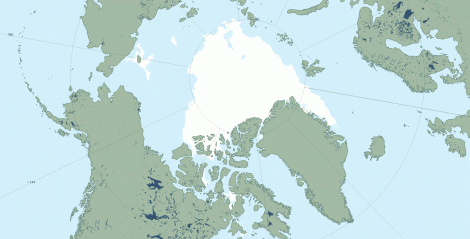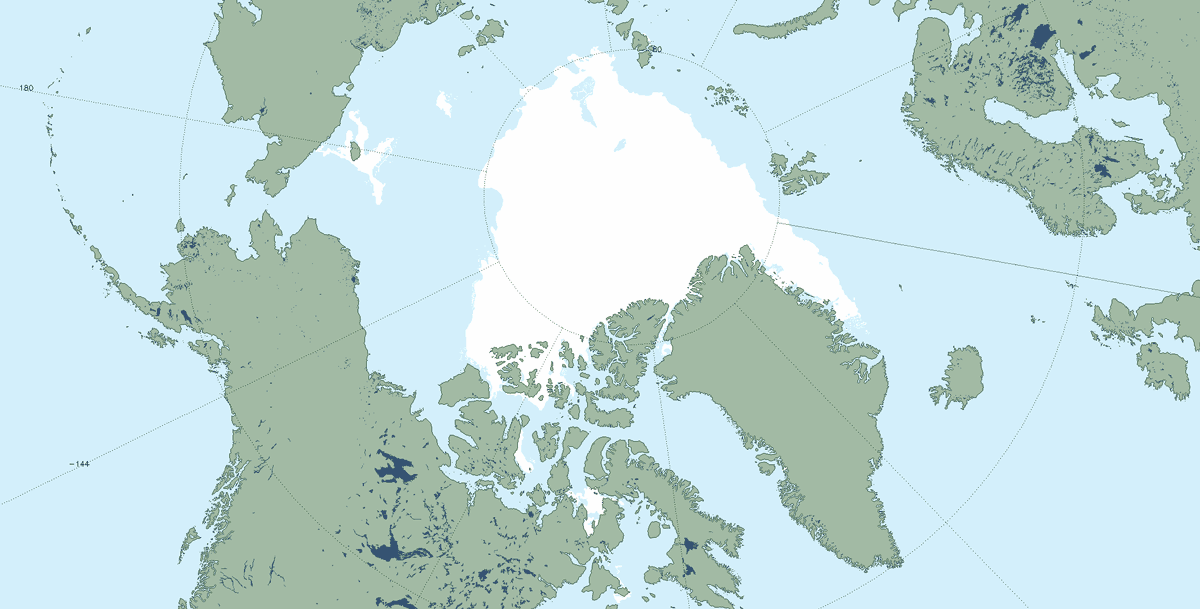A bit of good news: The extent of Arctic sea-ice melt may have reached its maximum for 2012. The record-setting melt isn’t good news itself, of course — just that it is near its bottom.
In 2007, the previous record-low year, the lowest extent of 4.25 million square kilometers was reached on Sept. 24. The lowest point we’ve reached this year was last Friday, at 3.66 million sq. km. — 13.8 percent less than the previous record. (All data here is from the Japan Aerospace Exploration Agency.)

Ice extent, as of yesterday. (Image courtesy of the University of Colorado.)
A post at Climate Central raises an interesting question: What does this year’s ice-coverage loss compare to in surface area?
The loss from the year’s high point (which came on March 17) has been massive — 10.77 million sq. km., a loss of 74.6 percent.
Climate Central suggests that it’s equivalent to the area of Canada and Alaska combined. Not quite — that area is about 11.7 million sq. km. Instead, the total loss is equivalent to Canada plus Texas. Plus Virginia. The area is actually larger than every country on Earth except Russia. It is larger than Australia, larger than Europe.
At some point in the future, late some summer, the ice will vanish completely. When it does, there will be another continent that the lost ice would surpass: Antarctica.
Which raises a whole other set of questions.
Update: Oh, man. Apparently (as Bill McKibben points out), you can bet on the extent of ice loss in the Arctic. Might as well make a little cash on the apocalypse, right?




